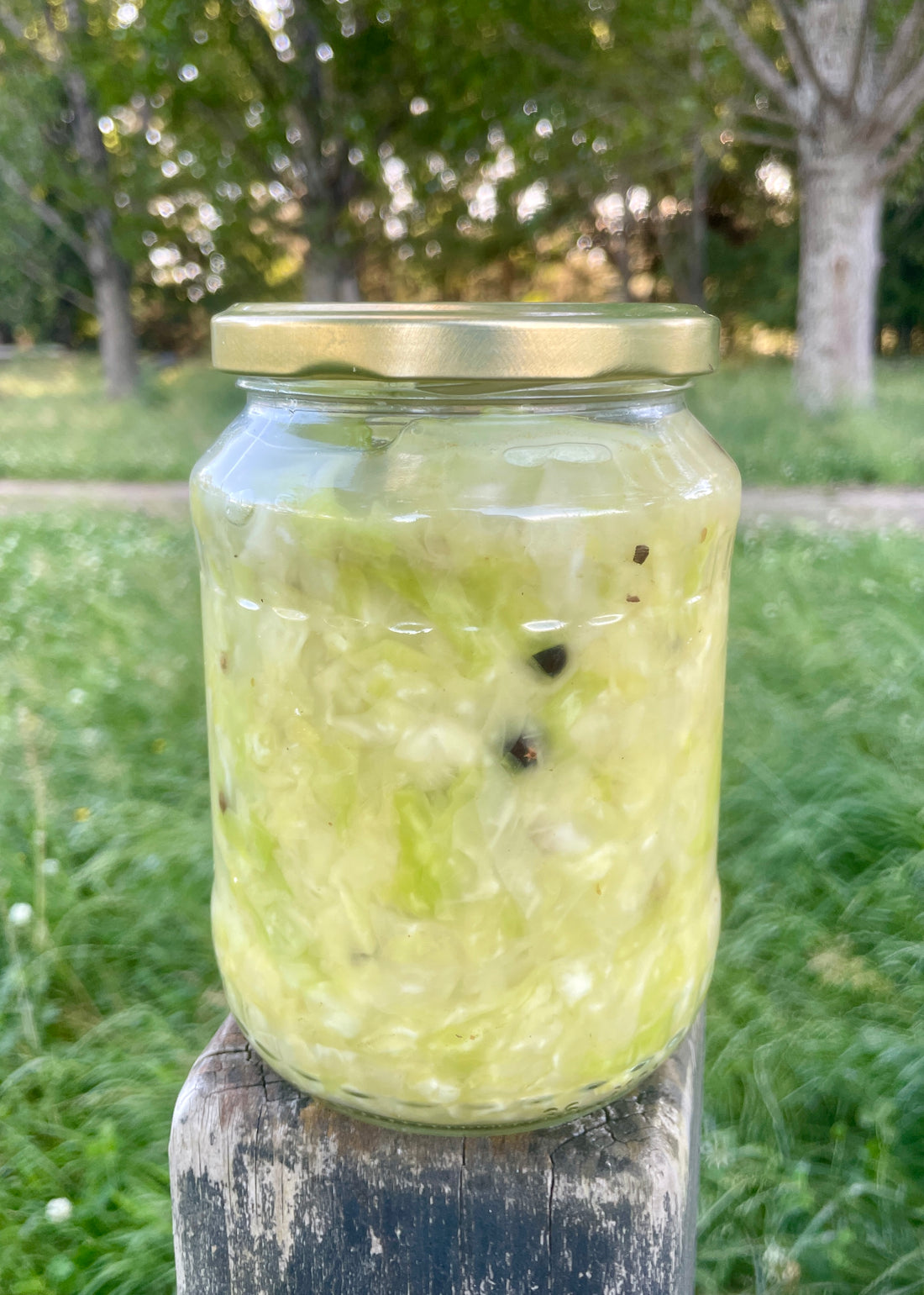Sauerkraut is made using the traditional food preservation method of lactic fermentation, which is not only ideal for long term storage but also brings health benefits due to high levels of vitamins, enzymes and probiotics, beneficial for gut health.
You will need:
1kg cabbage
10gm ground sea salt (non-ionised)
Optional extras:
Lots of other vegetables and even fruits can be added to sauerkraut, such as beetroot, radish, turnip, carrot, apple, pear, celeriac, pumpkin, chilli, garlic, ginger, shallots, spring onions and more.
Herbs and spices such as juniper berries, cumin seeds, fennel seeds, mustard seeds, dill, turmeric, coriander, caraway seeds, bay leaves, peppercorns.
Get creative and experiment with different flavour combinations! For best results, I would recommend that you maintain a ratio of at least 75% cabbage to 25% other vegetables / fruit.
This recipe can be doubled to make more if you have an abundance of cabbage, however the salt also needs to be increased accordingly - for example, if you are using 2kg of cabbage you will require 20gm salt.
What to do:
Remove the outer leaves of the cabbage and set aside. Chop the cabbage into quarters, removing the solid inner stem, then shred the cabbage (and any other vegetables you may be using) with a mandolin, or alternatively finely chop with a sharp knife, or grate.
Toss the shredded vegetables in a bowl with the salt and your choice of herbs and spices. You can create the sauerkraut in the bowl (crush using a pounder, potato masher or by hand) and then transfer it into jars once its done if you like but I prefer to make it straight into a jar as follows:
Transfer some of the mix into a sterilised glass jar and begin crushing the vegetables using a specialised pounder (or the end of a wooden rolling pin).
Keep packing tightly until the volume has decreased by half, then top up the jar with more of the vegetable mix and repeat until your jar is nearly full (you do want to leave a small gap between the top of the jar).
By this stage, the vegetables should have released plenty of liquid - if not, keep pounding and packing the jar until liquid completely covers your vegetables.
Take the reserved outer cabbage leaf, cut to size and fit this into the top of the jar, to hold the shredded vegetables down and immersed in the liquid. If you are having trouble with this process, you can also use wooden skewers criss-crossed over top of the cabbage leaf, or small weights (such as glass marbles), to help hold everything in place.
The ideal temperature to store your newly made sauerkraut is at around 20°C for the first three days. After three days has passed, the temperature should be lowered to around 15°C and for the next 2-3 weeks the jars should be burped (briefly opened) regularly. Bubbles are a good sign! This is an indication that your sauerkraut is fermenting nicely.
After this time, the fermentation process should be complete and the sauerkraut can then be stored away, either in the fridge or in a cool place, less than 10°C.
Homemade Sauerkraut can be stored for up to 6 months and should be refrigerated after opening.

